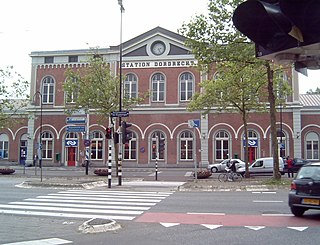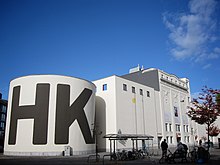
Ghent is a city and a municipality in the Flemish Region of Belgium. It is the capital and largest city of the East Flanders province, and the third largest in the country, after Brussels and Antwerp. It is a port and university city.

Tilburg is a city and municipality in the Netherlands, in the southern province of North Brabant. With a population of 222,601, it is the second-largest city or municipality in North Brabant after Eindhoven and the seventh-largest in the Netherlands as a whole.

Ostend is a coastal city and municipality, located in the province of West Flanders in the Flemish Region of Belgium. It comprises the boroughs of Mariakerke, Raversijde, Stene and Zandvoorde, and the city of Ostend proper – the largest on the Belgian coast.

Mechelen is a city and municipality in the province of Antwerp in the Flemish Region of Belgium. The municipality comprises the city of Mechelen proper, some quarters at its outskirts, the hamlets of Nekkerspoel (adjacent) and Battel, as well as the villages of Walem, Heffen, Leest, Hombeek, and Muizen. The river Dyle (Dijle) flows through the city, hence it is often referred to as the Dijlestad.

The City of Brussels is the largest municipality and historical centre of the Brussels-Capital Region, as well as the capital of the Flemish Region and Belgium. The City of Brussels is also the administrative centre of the European Union, as it hosts a number of principal EU institutions in its European Quarter.

Berchem is a southern district of the municipality and city of Antwerp in the Flemish Region of Belgium. Berchem is located along the old Grote Steenweg that has connected Brussels to Antwerp for several centuries; the town borders the districts of Deurne, Borgerhout, Wilrijk and Antwerp and the municipality of Mortsel. Berchem itself consists of three quarters, Oud Berchem, Groenenhoek and Nieuw Kwartier.

Breda is a city and municipality in the southern part of the Netherlands, located in the province of North Brabant. The name derived from brede Aa and refers to the confluence of the rivers Mark and Aa. Breda has 185,072 inhabitants on 13 September 2022 and is part of the Brabantse Stedenrij; it is the ninth largest city/municipality in the country, and the third largest in North Brabant after Eindhoven and Tilburg. It is equidistant between Rotterdam and Antwerp.
The Parc du Cinquantenaire or Jubelpark is a large public, urban park of 30 ha in the easternmost part of the European Quarter in Brussels, Belgium.

Brussels-South railway station is a major railway station in Brussels, Belgium. Geographically, it is located in Saint-Gilles/Sint-Gillis on the border with the adjacent municipality of Anderlecht and just south of the City of Brussels.

The Royal Museum of Fine Arts Antwerp is a museum in Antwerp, Belgium, founded in 1810, that houses a collection of paintings, sculptures and drawings from the fourteenth to the twentieth centuries. This collection is representative of the artistic production and the taste of art enthusiasts in Antwerp, Belgium and the Northern and Southern Netherlands since the 15th century.

Lucas Faydherbe was a Flemish sculptor and architect who played a major role in the development of the High Baroque in the Southern Netherlands.

Dordrecht is a railway station in Dordrecht, Netherlands located on the Breda–Rotterdam railway and the Elst–Dordrecht railway. The station was opened on 1 January 1872, when the railway line between Rotterdam and Antwerp was opened. On 16 July 1885, the railway line from Dordrecht to Gorinchem was opened. The neo-Renaissance railway station building is located to the south of the city centre. Dordrecht is now an important railway station on the Nederlandse Spoorwegen railway network. The services to Gorinchem and Geldermalsen are operated by Arriva.

Rivierenbuurt is a neighbourhood of Amsterdam, Netherlands. The neighbourhood is situated in the eastern part of the borough of Amsterdam-Zuid, bordered by the river Amstel to the east, the Boerenwetering canal in the west, the Amstelkanaal in the north and the A10 motorway in the south. In 2013, the Rivierenbuurt had approximately 28,400 residents.

Antwerp is a city and a municipality in the Flemish Region of Belgium. It is the capital and largest city of Antwerp Province, and the third largest city in Belgium by area at 204.51 km2 (78.96 sq mi) after Tournai and Couvin. With a population of 536,079, it is the most populous municipality in Belgium, and with a metropolitan population of over 1,200,000 people, the country's second-largest metropolitan region after Brussels.
Despite its size, Belgium has a long and distinguished artistic tradition that goes back to the Middle Ages, considerably pre-dating the foundation of the current state in 1830. Art from the areas making up modern Belgium is called in English Netherlandish up to the separation with the Netherlands from 1570 on, and Flemish until the 18th century.

St. Paul's Church is a Roman Catholic church located at the Veemarkt in Antwerp, Belgium. Its exterior is mainly Gothic with a Baroque tower while the interior is characterised by its rich Baroque decoration. It holds paintings by Antwerp's leading artists Peter Paul Rubens, Anthony van Dyck and Jacob Jordaens as well as abundant sculpture and church furniture crafted by leading Antwerp sculptors such as Artus Quellinus the Elder, Pieter Verbrugghen I, Jan Pieter van Baurscheit de Elder, Jan Claudius de Cock and Andries Colyns de Nole. Of particular note is the Calvary outside the Church which is made up of 63 life-size statues and nine reliefs executed in a popular and theatrical style.

The St Walburga Church in Antwerp, Belgium, formerly a parish church, was demolished in 1817.
Tram route 1 is a tram route in Antwerp (Belgium) connecting the Bolivarplaats in the Zuid neighborhood with the Havana site in the Luchtbal neighborhood to the North via the Leien and Noorderlaan.

Nicolaas Rockox (1560–1640), was an art patron and collector, numismatist, humanist, philanthropist and mayor of Antwerp. He was a close personal friend and important patron of Peter Paul Rubens. His residence in Antwerp was a centre where Antwerp's humanists and artists congregated and housed a large collection of artworks, antiques, rare objects and coins. It is now a museum known as the Snijders&Rockox House. He was knighted by Archduke Albert and Isabella, the Governor General of the Habsburg Netherlands.

Antwerp Citadel was a pentagonal bastion fort built to defend and dominate the city of Antwerp in the early stages of the Dutch Revolt. It has been described as "doubtlesse the most matchlesse piece of modern Fortification in the World" and as "one of the most studied urban installations of the sixteenth century".



















